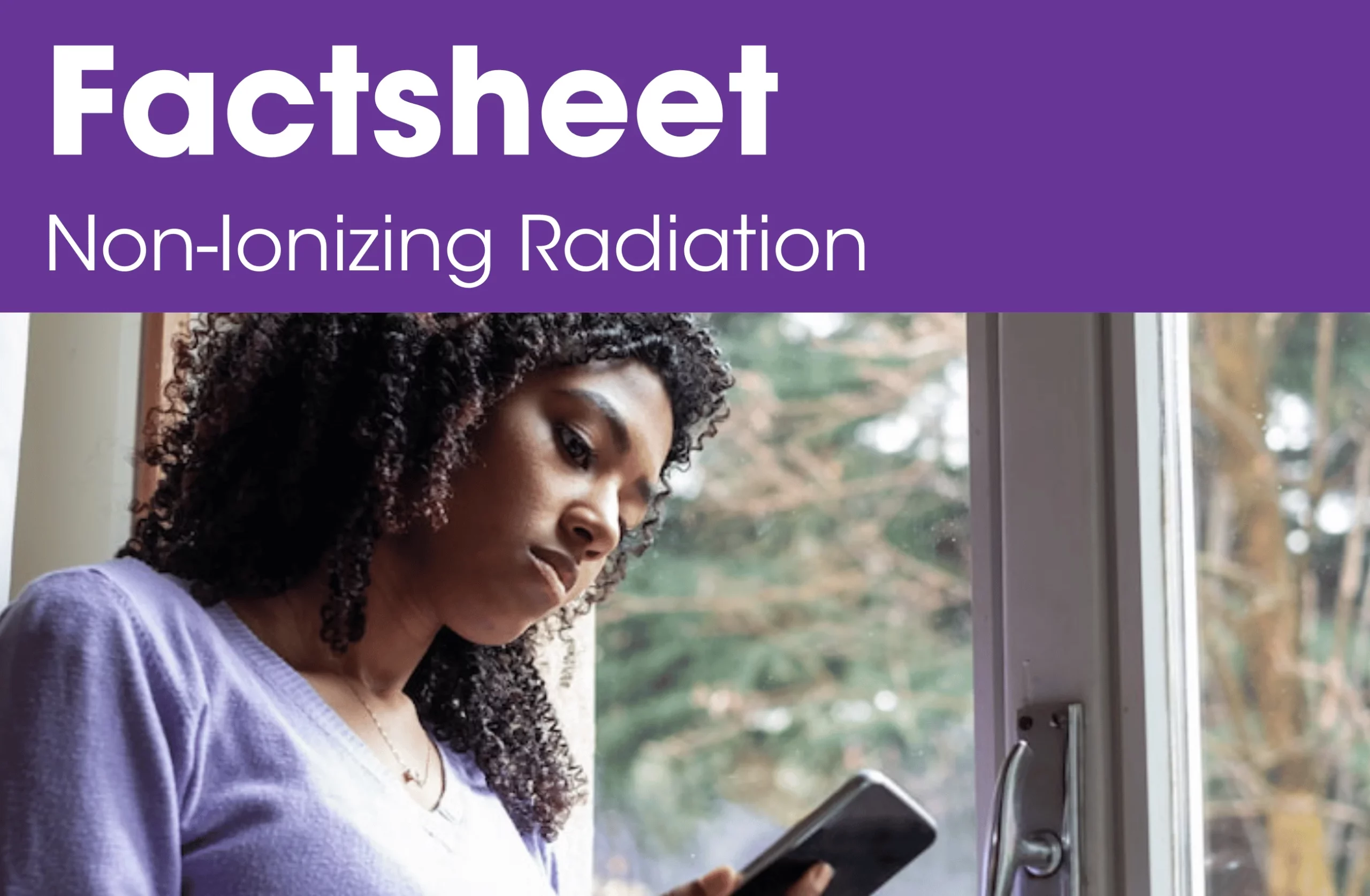Non-Ionizing Radiation
Non-Ionizing Radiation
More research is needed on the link between non-ionizing radiation (both low-frequency electromagnetic fields and radiofrequency radiation) and breast cancer risk. We should reduce and, where possible, eliminate low-frequency electromagnetic field exposure that is linked to breast cancer.Science Summary
The two most common types of exposure to non-ionizing radiation include radiofrequency radiation (RF) and extremely low-frequency electromagnetic fields (ELF-EMF). RF is emitted by cellular and cordless phones, cell antennas, Wi-Fi antennas, radar, and broadcast transmission towers; ELF-EMF is emitted by electric power lines and from electrical appliances.

In some studies, breast cancer risk has been associated with living in close proximity to electric power transmission lines, but other studies saw no effect. High chronic occupational exposures to ELF-EMF from power lines and electrical appliances may be associated with an increased risk of male breast cancer.
Non-ionizing radiation from cell phones has been linked to brain cancer, but studies on breast cancer have yielded mixed and inconclusive results. As cell phone technology rapidly develops, research is needed on modern 4G and 5G technologies.
What can I do for my own body and health?
Though breast cancer risk is unclear, non-ionizing radiation exposure has been linked to other health concerns (e.g., brain cancer, tumors in the salivary glands, negative effects on neurological and cognitive functions, etc.). RF exposure decreases exponentially with distance from our bodies. Knowing this, there are some relatively easy steps we can take to reduce our health risks:

Avoid carrying smart/cell phones next to your body, including in your bra.

Use earbuds/microphones or other equipment (e.g., speakerphone or headset) to avoid holding your phone next to your head.

Minimize phone use by children.

Don’t sleep with your phone near your head.

Avoid using smartphones to download large files or stream videos.

When streaming via phone, keep the phone away from your body.
What can I do to support the health of my family and friends, and my community?
Share these practices and tips with loved ones. Try scheduling time or events with friends and family where phone use is unnecessary and discouraged. For more ideas on ways to reduce your exposure to RF, see the California Department of Public Health’s advice on reducing exposure.
How can I navigate and get support with any systemic barriers to my health?
As for occupational exposures, studies found an increased risk of male breast cancer in workers exposed to high ELF-EMF over long periods. However, there are currently no specific OSHA standards that address extremely low frequency (ELF) fields. Though no official recommendations exist, the National Institute for Occupational Safety and Health has a publication on EMFs in the workplace that includes examples of voluntary measures employers and workers can take to reduce exposure.
How can I help advocate for and support systemic change to remove barriers to health?
Occupational settings are clear avenues where we can take systems-level action to reduce non-ionizing radiation exposures:

Develop best practices to monitor and reduce electromagnetic field exposures for occupations of high concern (for example, power grid/telecommunication workers).
In general, more research is needed to understand breast cancer risk, and many research challenges exist given how long studies take and how quickly this technology changes.
Common sense measures to reduce exposure make sense, even if the science remains inconclusive about the link between cell phone use and breast cancer.
Even though many workers encounter non-ionizing radiation on the job, there is currently no framework for health protection from this exposure. We need to develop best practices to monitor and reduce electromagnetic field exposures for occupations of high concern, such as power grid/telecommunication workers. Some global leaders have recognized the significance of this issue and have taken action, such as those in the European Union, which requires health surveillance of workers exposed to electromagnetic fields. The goals of this surveillance are the prevention or early detection of the adverse effects linked to this exposure.
Resources

Chapter Pullout
Types: Fact Sheet, Report





